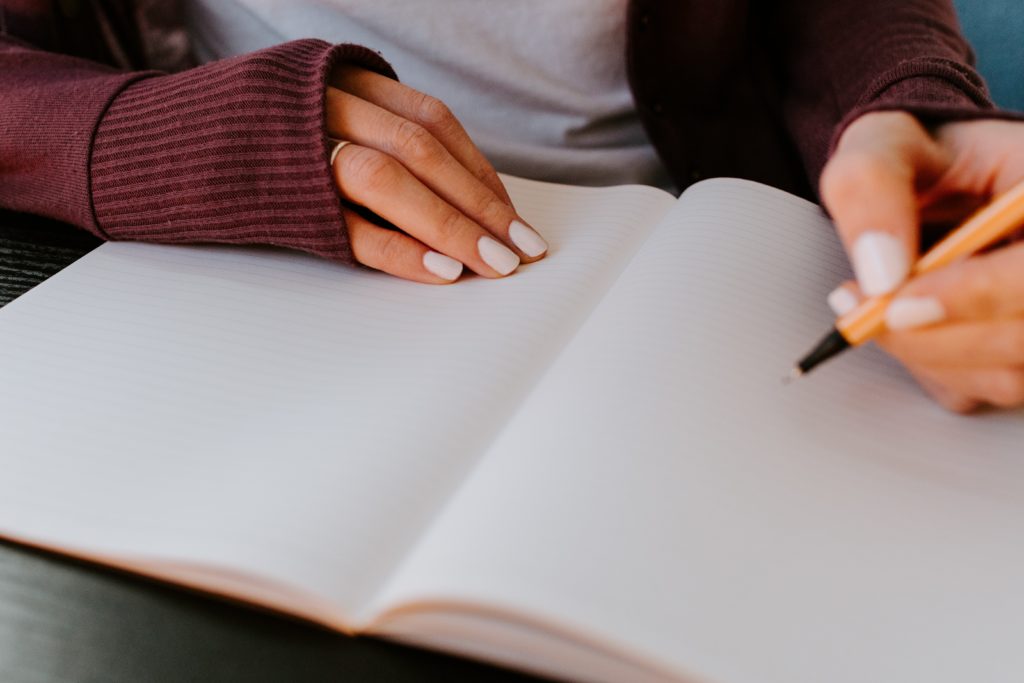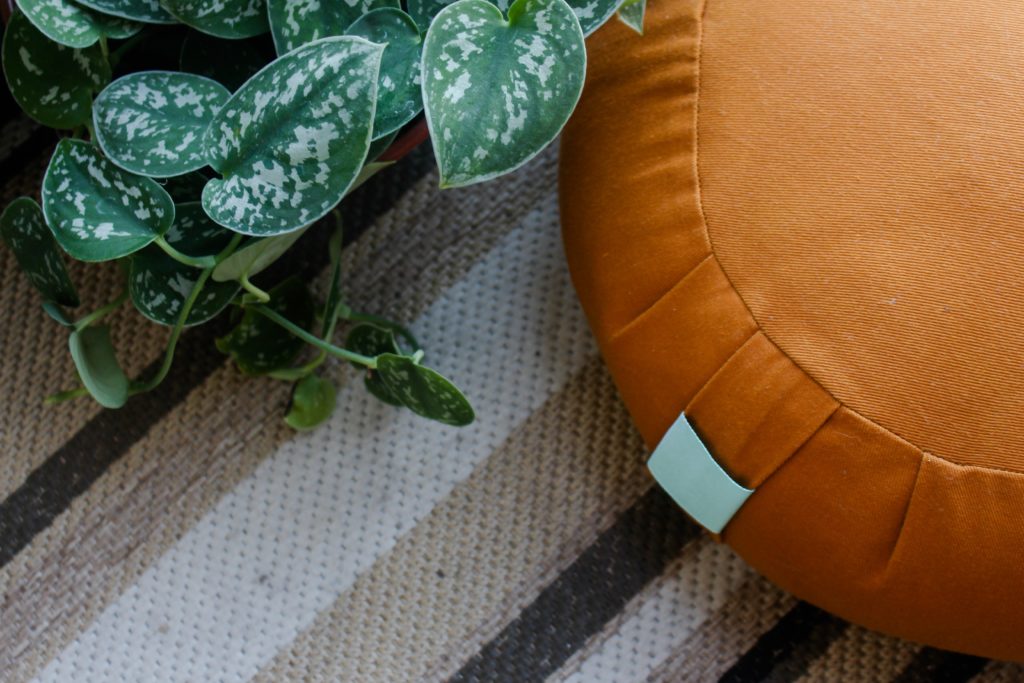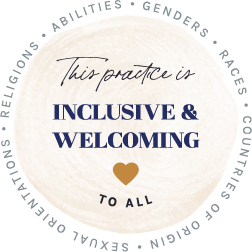Sweaty palms, racing heart, and erratic thoughts – feeling anxious can be debilitating and overwhelming.
Once we recognize the experience and when it happens, we can put in place techniques that allow us to regain control. Grounding practices can be particularly helpful due to their potential for use anywhere, at any time.
While grounding is valuable for managing anxiety triggers and lessening symptoms, it is also helpful for regaining control when life appears to be running away from us (Williams & Penman, 2016).
What Is Grounding & How Can It Help?
Anxiety can leave us feeling panicky, on edge, and as though we are losing control.
While it can be debilitating, anxiety is thought to have evolutionary origins. It is the unwanted product of a valuable and ancient fight-or-flight response to perceived danger and, for a long time, kept humans alive. When we experience or think about stressful events, our amygdala is activated, preparing us for events and behaviors that may need to happen (Allen, 2020; Jenkins-Omar, 2020).
A negative thought about an actual or imagined situation can lead to changes in the body, including increased muscle tension, elevated heart rate, and faster breathing. Such bodily changes can further exacerbate anxious thinking, leading to a vicious cycle that leaves us physically and emotionally overwhelmed.
In our modern, busy, and overstimulating world, such automatic and often unwanted responses can damage our mental health (Jenkins-Omar, 2020).
It doesn’t have to be this way. Anxiety is not a given, and there are tools and techniques that can help, one of which is known as grounding.
Grounding essentially means bringing the focus back to our physical experiences rather than remaining at the mercy of our racing and self-doubting minds.
Becoming more aware of our body and our surroundings helps us regain a sense of control by grounding us in the present moment rather than focusing on possible and unwanted future outcomes or unfortunate past events (Allen, 2020).
In a sense, grounding gets us out of our heads, escaping anxious and stressful thoughts and regaining the moment.
Can Grounding Help With Anxiety & Dissociation?
Grounding strategies are simple yet powerful techniques for detaching from emotional pain, such as sadness, anger, and anxiety.
Decker, Brown, Ashley, and Lipscomb (2019) found that meditation, mindfulness, and breathing techniques helped social work students regulate their autonomic nervous system, decreasing their degree of anxiety.
Grounding practices can distract someone who is anxious or becoming anxious by encouraging focus on something other than the difficult or upsetting emotions they are currently experiencing. Grounding or centering creates a safe place, or healthy detachment, that provides time and space to recover and heal (Najavits, 2011).
While grounding does not attempt to solve the underlying issues causing anxiety, it does provide the temporary peace required to return to a state of mind that facilitates problem-solving and decision-making. It can also be performed in isolation, with no additional resources or anyone else being aware (Najavits, 2011).
Dissociation, not to be confused with healthy detachment, can also be helped by grounding practices. In a study of children with suspected histories of trauma, Yehuda (2005) found that practicing grounding techniques helped them reduce dissociative coping mechanisms and acquire the vocabulary to talk about their experiences and begin the healing process.
How Does Grounding Work in Real Life?
Grounding can create a sense of personal calm and be especially valuable when our days are most hectic or life starts unraveling. The techniques take little or no resources and can be performed quickly and discreetly (Najavits, 2011).
There are at least three types of grounding techniques (Allen, 2020; Najavits, 2011) used in real-world situations: mental, physical, and soothing. Individuals can use them separately as the occasion demands or combine them as needed.
Mental techniques – Focusing the mind
The individual pays attention to specific aspects of the environment, for example, describing the room, naming items in a category (such as types of cars, dogs, songs, or sports), explaining an activity in great detail, or imagining a pleasant situation or image.
Physical techniques – Focusing the senses
Stimulating or experiencing the senses can help. Running water gently over our hands or wrists and noticing the sensations or paying attention to the weight of our body against the chair provides both a distraction from the upsetting situation and a welcome focus for calm.
Soothing techniques – Talking to ourselves with kindness and compassion
Repeating words of compassion or coping statements, such as, “I can do this” or “These feelings will pass,” can be comforting and consoling. Statements like this, said out loud or to ourselves, show kindness and self-compassion when situations can seem hostile.
While there are many and varied techniques for grounding ourselves when we become anxious, each helps us restore a sense of ease and peace in our lives (Allen, 2020).
7 Best Grounding Tools and Techniques
We can practice the following grounding techniques at any time when beginning to feel anxious.
With practice, they will become more familiar, habitual, and something to turn to when we recognize unhelpful thoughts or physical sensations that lead to feelings of anxiety (modified from Allen, 2020; Jenkins-Omar, 2020; Williams & Penman, 2016; Najavits, 2011):

01. The Five Senses
Your senses are another powerful way to reconnect with the present and redirect attention away from anxiety triggers.
While you may wish to find somewhere quiet, this exercise can be performed anywhere.
When sitting comfortably, close your eyes and take a few slow, deep breaths in through your nose and out through your mouth. Relax and focus your attention on each breath as it happens.
Next, open your eyes and, either to yourself or out loud, ask yourself the following:
What can I see?
What can I feel?
What can I hear?
What can I smell?
What can I taste?
Try to remain in the moment throughout, returning your attention to each sense and what you observe.
When you’re ready, take a few deep breaths to end the exercise.

02. Holding an Object
Experiencing and becoming immersed in an object can be a great way to ground yourself.
It can be helpful to keep a smooth stone or small paperweight in a drawer ready for this exercise. Any object with a pleasant texture or nice appearance that can fit in the palm of your hand will work.
Hold the object in your hand, bringing your full attention to how it looks and feels. Think about its colors, how it sparkles, reflects the light, or casts a shadow. Reflect on its texture. Is it smooth, soft, rippled, coarse, or dry? Does it feel light and balanced, or heavy and unevenly weighted?
Spend time observing the object, immersed, present, and grounded.

03. Grounding Chair
Even the act of sitting can help us regain a sense of feeling grounded, and it can be discreetly performed anywhere.
Become aware of the contact between you and your seat, your weight against its surface, and the texture of the material on the chair.
When you’re ready, apply pressure from your feet to the ground. Imagine the weight draining from your mind and body (perhaps as a color of your choice) into the ground. Feel the lightness of each part of your body as that weight leaves.
Take a few easy, slow breaths and return your awareness to the room when you are ready. Notice how you may feel a little lighter, more present, and less burdened.

04. Ask Yourself Questions
While anxiety often leaves us feeling on edge and panicky, it may also cause us to feel unreal, dissociated, and detached. Grounding ourselves with questions can bring us back to the here and now.
Ask yourself the following questions and write down the answers, perhaps in a dedicated journal or on quality paper set aside for the task using a preferred pen or pencil:
Where am I right now?
What day and month is it?
What season is it?
How old am I?
Where do I live, and with whom?
Imagine yourself at this point. A line of human ancestors brought you to the present moment, to be here right now.

05. Positive coping statement
Prepare a coping statement for when you begin to feel the onset of anxiety or overwhelm.
For example:
My name is X. Everything that is happening now will pass. There will come a time when I can look back on this time without fear or anxiety.
Repeat the above statement or something similar, lingering on each word, and recognize the temporary nature of painful memories and difficult events.

06. Three-minute breathing space meditation
Mindful breathing is the perfect companion to grounding.
Breathing is a powerful, effective, and instant way to return the body and mind to the present and experience the many benefits of mindfulness and centering.
Williams and Penman (2016) suggest using a three-minute breathing space meditation for grounding.
Sitting upright and comfortably, close your eyes, bringing your attention to your inner experience.
Step One: Explore your experience right now by considering the following:
What thoughts are going through your mind? Recognize them as mental events. What feelings are present? Acknowledge them without attempting to change them. What bodily sensations are you experiencing? Become aware of any tightness or discomfort, but do not try to influence the sensation.
Step Two: Gather and focus.
Imagine a small spotlight following the physical sensations of each breath. Move in close to the sensation of the breath in your abdomen. Recognize it expanding and contracting. Gently place your hand on your stomach if it helps. Maintain your focus.
Step three: Expand your attention.
Expand your awareness of your breath to your whole body. Become aware of your whole being as you breathe, including discomfort and tension, each breath moving around the sensations. Rather than trying to change them, befriend the sensations.
When you are ready, take a few gentle, deep breaths, opening your eyes if you haven’t already done so. Return your attention to your surroundings while carrying the calmness with you.

06. Finger and shape breathing (for children)
If a child is using short and shallow breaths when anxious, gaining mastery of their breathing can help them restore control of how they feel.
This simple exercise can be easily performed in a group or used discreetly by a child to manage their anxiety.
The child aims to gently track the movement, as though slowly progressing up and down a hill, in control of each breath.
Ask the child to follow the outline of their hand with their gaze or with another finger. They can imagine it if they prefer to keep their eyes closed.
As their attention moves slowly and gently up each finger, they breathe in. On the way back down the other side, they breathe out. Repeat for all five fingers on a hand, then continue back if they wish to continue.
Encourage the child to practice the exercise and have it ready when they begin to feel anxious.




